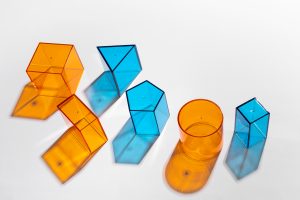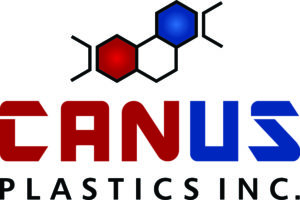Choosing the Right Adhesive for Your Plastic Project

Adhesives play a crucial role in crafting projects involving plastic. Whether you’re building a marketing display or repairing a household item, choosing the right adhesive is important for creating a strong hold. Different types of plastic require specific adhesives, and selecting the right one can make or break your project.
Plastic adhesives include types like epoxy, cyanoacrylate (super glue), and polyurethane, each with unique features designed to bond different materials. Understanding which adhesive aligns with your type of plastic can simplify the process and ensure the best results. This knowledge helps in forming durable connections without damage.
Safety should always come first when working with adhesives. Proper storage and handling not only preserve the quality of the adhesive but also protect you during application. Knowing how to prepare and treat plastic surfaces with adhesives can lead to cleaner, more professional outcomes. Let’s explore how to make the most of your adhesive selections for any plastic project.
Understanding Plastic Adhesives
Adhesives are key to joining plastic parts together with strength and precision. Knowing which adhesives work with plastic helps achieve the best results. Plastics have different chemical structures, so choosing the right adhesive depends on factors like the type of plastic, the bond strength needed, and the environment it will face.
Types of Adhesives Best Suited for Different Plastics:
– Epoxy: Ideal for strong, structural bonds. Works well on rigid plastics like polycarbonate.
– Cyanoacrylate (Super Glue): Fast-setting and perfect for quick fixes on small projects. Best on smooth surfaces like acrylic.
– Polyurethane: Flexible and resistant to harsh conditions, good for plastic components that face stress and humidity.
Key Properties to Consider:
– Flexibility: Some projects need an adhesive that can flex, especially in dynamic structures.
– Curing Time: Quick-fix projects require fast-curing adhesives, while detailed tasks may benefit from a slower cure.
– Water Resistance: For outdoor or moisture-prone applications, choose adhesives with strong water resistance.
By understanding how different adhesives interact with various plastics, you can select the most effective one for your project needs. Each adhesive offers unique properties, so matching them to the project’s requirements ensures long-lasting success.
Matching Adhesives to Plastic Types
Different types of plastics require specific adhesives for optimal bonding, as not all plastics adhere in the same way. Here are examples of common plastics and the adhesives that suit them:
– PVC (Polyvinyl Chloride): Known for its use in pipes and fittings, PVC bonds well with adhesives containing solvents designed for this plastic.
– Polycarbonate: Used in bullet-resistant glass and windows, polycarbonate needs adhesives like epoxy for strong and effective bonding.
– Acrylic: Found in display cases and aquariums, acrylic bonds best with cyanoacrylate, providing a clear, seamless finish.
Tips for Testing Adhesive Effectiveness:
– Before committing, always test the adhesive on a small, hidden area.
– Check for bonding strength by gently pulling the joined pieces.
– Observe the adhesive’s performance over a few hours to ensure it sets correctly.
Understanding how adhesives pair with different types of plastics ensures durability and function in the final product. Choosing the right adhesive not only enhances the bond but also contributes to the project’s overall strength and longevity. By testing adhesives on small areas first, you can avoid costly mistakes and achieve professional-quality results.
Application Tips for Effective Bonding
Achieving effective bonding with plastic adhesives involves several key steps. Proper preparation and application techniques are essential for ensuring strong and long-lasting bonds.
Preparing Surfaces for Adhesive Application:
– Cleaning: Remove any dust, grease, or oil from the surfaces. Use a mild detergent or isopropyl alcohol to ensure a clean start.
– Sanding: Lightly sand the areas to be joined. This creates a rougher surface for better adhesion, improving the bond’s grip.
– Drying: Ensure all surfaces are completely dry before applying the adhesive to prevent weakened bonds.
Techniques for Strong Bonds:
– Apply Evenly: Spread the adhesive evenly to cover the surface without excess. This provides a uniform bond and reduces waste.
– Clamp Firmly: Use clamps or weights to hold the parts in place as the adhesive cures, ensuring alignment and strength.
– Temperature Considerations: Pay attention to the recommended temperature range for the adhesive to cure effectively.
Common Pitfalls to Avoid:
– Using too much adhesive, which can cause a weak bond.
– Failing to clean surfaces properly, leading to adhesion issues.
– Not allowing sufficient cure time before testing the bonded surfaces.
Adhesive Safety and Storage Practices
Safety and proper storage of adhesives are critical for both effectiveness and personal protection. Handling adhesives correctly ensures they perform well when needed.
Importance of Using Adhesives Safely:
– Ventilation: Apply adhesives in a well-ventilated area to avoid inhalation of fumes.
– Protective Gear: Wear gloves and safety glasses to prevent skin and eye contact with adhesives that can cause irritation.
Guidelines for Proper Storage:
– Sealing: Keep adhesives sealed tightly when not in use to prevent exposure to air, which can degrade their quality.
– Temperature Control: Store adhesives in a cool, dry place. Extreme temperatures can affect their viscosity and strength.
– Expiration Dates: Check the dates to avoid using expired adhesives that may not work effectively.
Safety Gear and Practices:
– Use appropriate gear based on the adhesive’s safety data sheet.
– Be aware of first-aid measures in case of accidental contact or ingestion.
Conclusion
Choosing the right adhesive for your plastic project is an important decision that impacts the durability and success of your work. By understanding different types of adhesives and their compatibility with plastics, you can ensure strong and lasting bonds. Proper application techniques, coupled with safety and storage practices, enhance the quality of your projects while keeping you safe.
Canus Plastics Inc. is your trusted partner in achieving the best results for your plastic projects. With our extensive range of plastic products and expertise in adhesives, we are ready to assist you in finding the perfect solutions. Visit our website to explore how we can help your next project shine.

